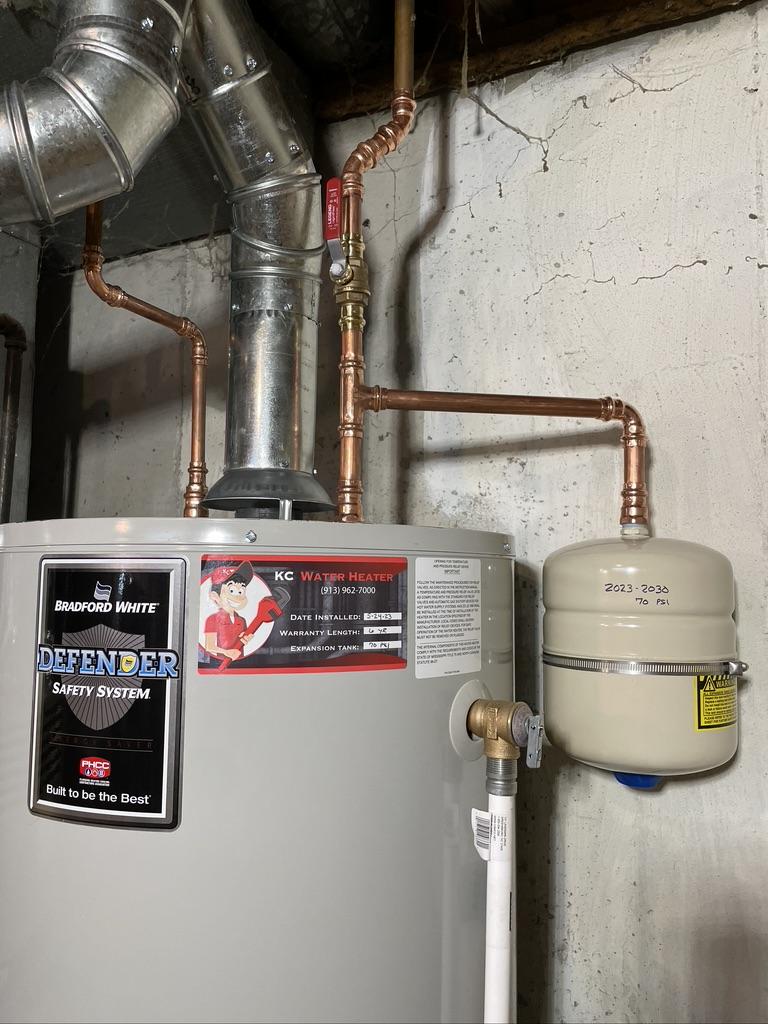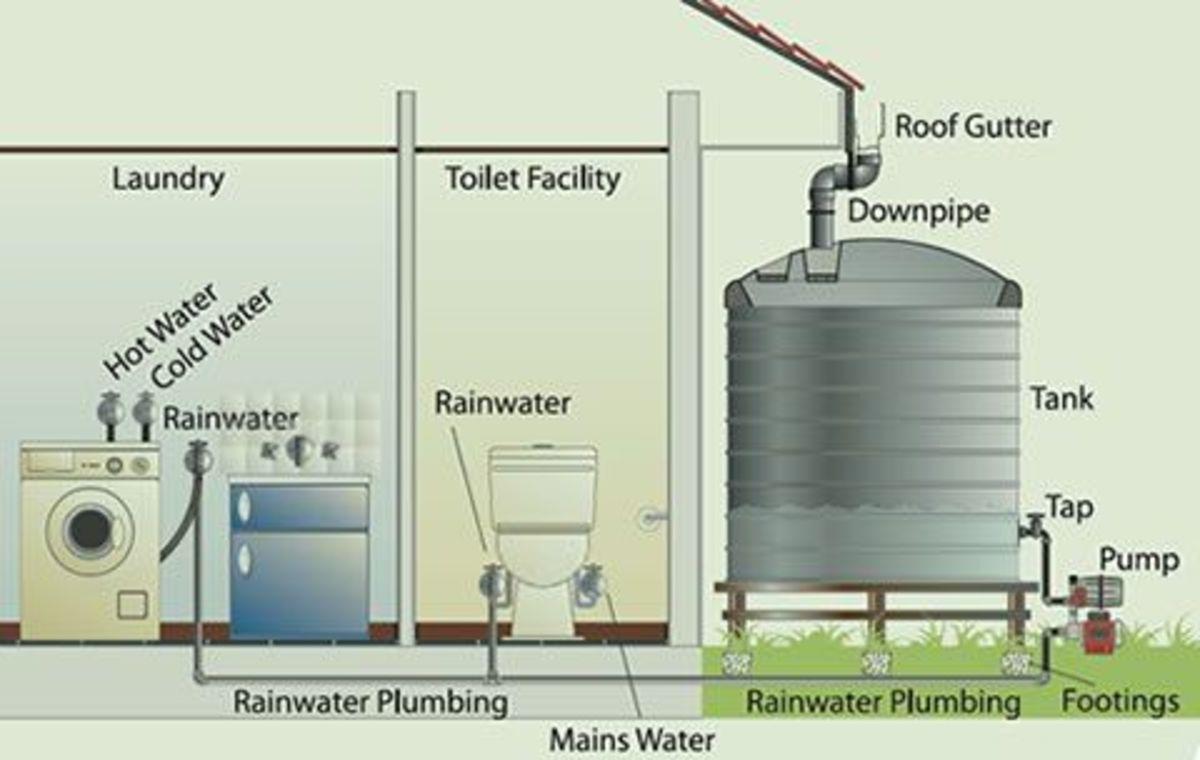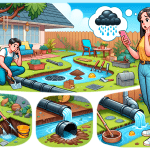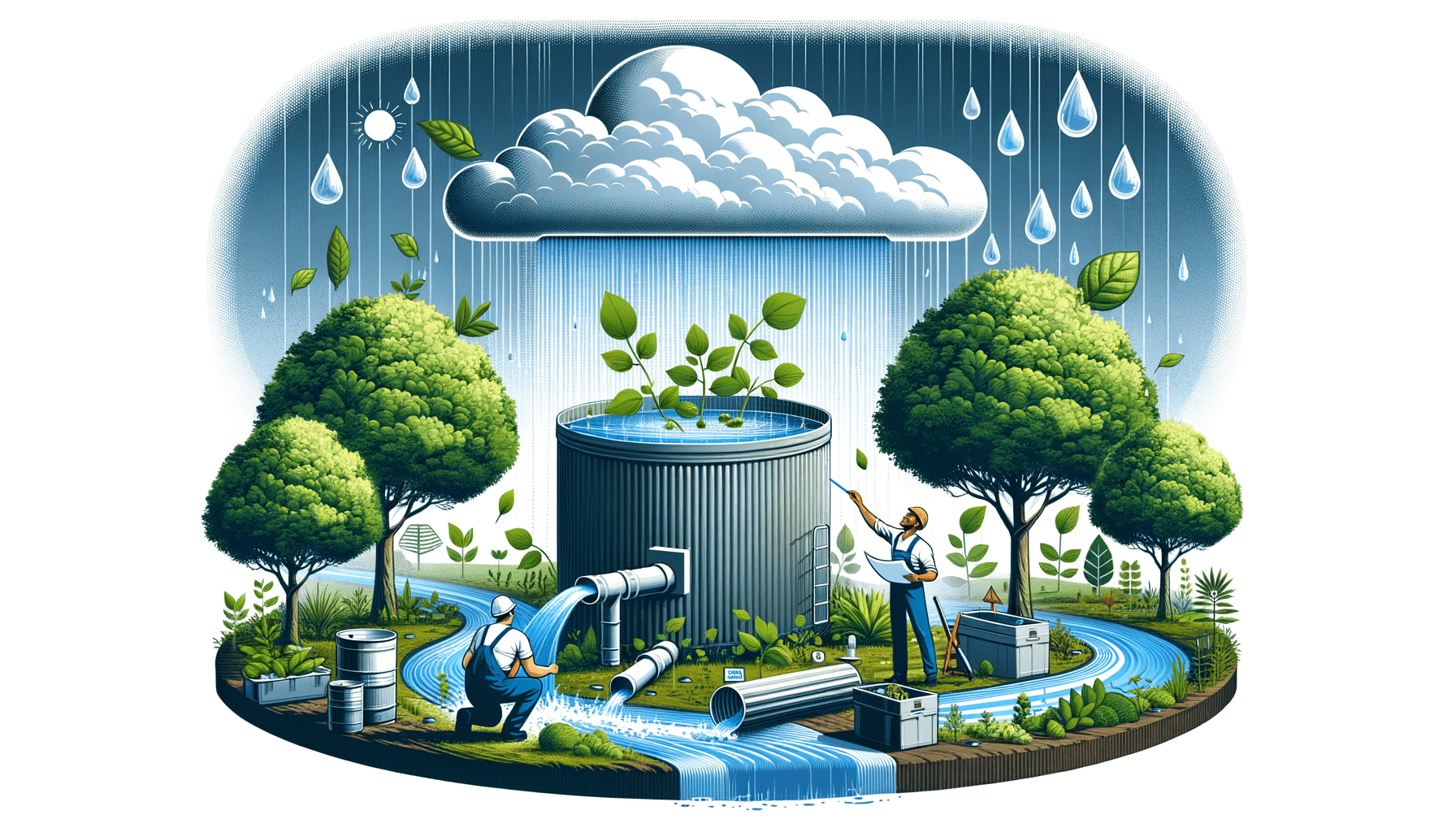Imagine the satisfaction of branding the power of rain to your advantage. Capturing, storing, and using it in a way that not only brings benefits to your household but also contributes to a better environment. Today, we’ll take you through the process of installing a rainwater tank – a sustainable solution for your water needs.
Contents
- The Power of Rainwater
- Choosing Your Rainwater Tank
- Proper Location for Tanks
- Preparing the Tank Base
- Rainwater Tank Installation Process
- Inside Rainwater Harvesting Systems
- Function of Harvesting Systems
- Step-by-Step System Installation
- Offerings from Rainwater Management
- Path to Perfect Tank Installation
- Connecting Buildings with Gutters
- Downspout and Plumbing Role
- Noteworthy Installation Slip-ups
- Attaching Plumbing to Structures
- The Future is Here & Now!
- Frequently Asked Questions (FAQ)
The Power of Rainwater
First, let’s not underestimate the power of rainwater. In Australia, it is found that rainwater harvesting can reduce household water use by up to 40%. The benefits don’t stop at conserving water but also impact other areas. For example, reducing stormwater runoff by up to 40%, which in turn pitches in repressing erosion and pollution.
A primarily simple concept yet so consequential – rainwater harvesting involves capturing rainwater from surfaces such as roofs, storing it in tanks and channels, and directing it for usage or back to the environment such as waterways or groundwater. A single inch of rain on a 1,000-square-foot roof can yield a significant amount – over half a tonne!
The World Health Organization (WHO), a trusted authority in public health worldwide, has highlighted the benefits this type of system offers – from access to cleaner water sources during droughts to savings on water bills and positive effects on health. And indeed, Aussies are utilizing this power – in some regions, as many as 26% of households use rainwater.
Choosing Your Rainwater Tank
The central part of the rainwater harvesting system is, of course, the tank. Sizes start from humble 100-gallon barrels to large titans holding up to 10,000 gallons! Whatever size suits you best will largely depend on your property size, the amount and pattern of rainfall in your area, and your water use patterns.
A wide variety of materials are available for tanks – plastic (or polyethylene), steel, stainless steel, fibreglass, and concrete. Each material has its pros and cons concerning cost, durability, maintenance requirements, and aesthetic appeal. To maximize benefits: consider your conditions and needs before making the purchase decision.
The global rainwater harvesting market valuation stood at USD 1.6 billion in 2019 and is expected to grow. This fact signals that more people are understanding not just the environmental advantages but also the cost-saving potentials of using efficient rainwater systems requiring minimal maintenance
Proper Location for Tanks

Getting the location of your tank right is a vital step for efficient collection and usage. It would be best if you ideally placed it as close as possible to both catchment areas (like roofs) and premise where you use water (home or garden). Remember that size matters too – make sure you have enough space for your chosen tank size!
Consider accessibility for both installation and ongoing maintenance or repairs. Issues like sturdiness of the ground are an essential factor – if the land is soft like Sod, you’ll need proper foundations or reinforcements. Visibility also matters; ensure it does not create any eyesore or block important views.
For those wanting to install larger systems or live in urban areas with strict regulations, permits might be required. Check with your local council prior to installation to keep things compliant with national building codes.
Preparing the Tank Base
Tank preparation is not all about picking the perfect spot. Now, onto laying a strong foundation; the base of the tank must be level and firm. Stability is crucial to preventing any tilt or movement once it starts filling with water; else leakage may occur.
Sand or crusher dust works well as a tank base, compacted to be level and flat. It would help if you surrounded larger tanks by a concrete curb to prevent base erosion or instability. Make sure to clear the area around the tank from any debris or vegetation that can damage or contaminate the tank and water.
The Master Plumbers Association of Australia, a leading authority in the Australian plumbing community, stands behind these precautions. They highlight that such careful planning and preparation can save not only potential disaster but also the costs associated with repairs or replacements down the track.
Rainwater Tank Installation Process
A properly installed rainwater tank can serve up for many years, providing independent water supply for your home or garden. Following installation guidelines is crucial for your system’s efficiency and lifespan.
The process usually involves inlet screens (to keep debris out), an overflow valve (in case of high rainfall), an access point at the top (for maintenance), and suitable connectors for pipes, pumps, or irrigation systems.
Ensure you use suitable materials for longevity that meet standards for potable water, especially if you plan on using it for household purposes like washing or even drinking. Professional help from experienced plumbers is always advisable when installing rainwater harvesting systems.
Inside Rainwater Harvesting Systems

Rainwater tanks are connected to drainage systems that collect rain from your roofs, a process typically involving rain gutters and pipes. If you want to improve system efficiency, you can add components like first-flush diverters, which essentially ensure the initial batch of rainwater (often filled with debris and dust) is directed away from your tank.
Make sure all connections are leak-proof to avoid losses during the transmission. It’s not all about storage; consider how you’ll use this water. For simple garden uses, a basic hose connection should suffice; while for home usage, it might involve pumps or treatment systems.
Rainwater harvesting is more than collecting falling rain; it can become part of a comprehensive water management plan targeting self-sufficiency and environmental responsibility with good engineering.
Function of Harvesting Systems
What’s fascinating is that a well-designed and installed harvesting system serves multiple purposes. Initially, providing an ample water supply as per your needs – be it plants that crave for rainwater or home utilities. Did you know? On average, a system can save around 50,000 gallons of water per household per year!
Secondly, reducing rainfall runoff from premises and easing the strain on public drainage systems. Architecture today includes urban planning where rainwater harvesting becomes a monumental tool, reducing flooding risk while providing local water supplies.
This addresses multiple environmental concerns from both an aquatic and terrestrial perspective – promoting healthy soil humidity, reducing erosion, minimizing water wastage, and even contributing to waste reduction when effectively filtering debris!
Step-by-Step System Installation
You’re probably thinking, “Where do I start with installing a rainwater tank?” No worries mate, we have you covered. Here at Dan’s Plumbing, the installation process may seem daunting, but it’s quite simple when broken down into manageable chunks.
Firstly, we measure the area for your tank. A significant factor to consider is the size of your roof – a single inch of rain on a 1,000-square-foot roof can yield approximately 600 gallons of water. Considering this can help determine the size of the tank you’ll need. Rainwater tanks range from small 100-gallon barrels to large systems that store over 10,000 gallons. Our expert team guarantees precise measurements for optimum utility.
Next, we select a suitable tank base. Tank bases can be made of concrete or compacted sand and should be level to provide a stable foundation. Once the base is set, it’s time to position the tank and hook up the fittings.
We then connect your guttering system to the tank using quality pipes. The final installation phase involves plumbing work – connecting the outlet pipe and installing necessary equipment including pumps and filters if necessary.
Offerings from Rainwater Management

Rainwater Management isn’t just about collecting water; it’s also about managing it effectively. This is where Dan’s Plumbing shines! Alongside our high-quality rainwater tank installations, we also offer products and services geared towards maximising water usage.
- Rainwater filters: Ensuring your harvested water is clean by removing debris before it enters your storage tank.
- Diverter valves: Handy for managing water flow – allowing you to manually control whether water goes into your tank or down your regular drainage system.
- Water pumps: Important for pressurising harvested water, particularly useful if you plan to use it in household activities, such as laundry or flushing toilets.
- Tank level monitors: A key device for staying updated on your tank’s water level.
By adopting rainwater harvesting methods, a household can reduce their water usage by up to 40% on average. This is both cost-effective and environmentally sound. In fact, in Australia alone, up to 26% of households have already adopted the practice!
Path to Perfect Tank Installation
Beyond just picking out your tank and the desire to save water or be kinder to nature, setting up a perfect rainwater harvesting system requires careful planning. This we can do together.
We’ll first take into account the size of your roof and your average regional rainfall. Giving consideration to geographical factors such as the best place for shading and temperature control, while considering municipal by-laws, we’ll find the perfect spot for your tank. Overlooked but equally important is access – an easily accessible tank makes maintenance less burdensome.
Connecting Buildings with Gutters
Gutters play a vital role in any rainwater harvesting setup. These are an integral part of the infrastructure that guides rainwater from your roof towards your tank. Significantly, this reduces stormwater runoff by up to 40%, lessening erosion risk and nearby waterway pollution.
A well-installed gutter connected efficiently with downspouts and direct pipelines can ensure that no drop of precious rainwater is wasted. Particular attention should be paid here – faulty guttering can drastically reduce a tank’s effectiveness and even damage your property over time.
Downspout and Plumbing Role

Now we’ve covered the importance of gutters, it’s time to discuss downspouts and plumbing. Downspouts or drainage pipes play two vital roles: they direct water from your gutters right into your tank, and they prevent water overflowing or backing up by providing an escape route for excess water.
The ability to correctly align these downspouts with your gutter and tank is critical to the success of your rainwater harvesting system. Also essential is the implementation of high-grade flexible piping known as ag pipe – maximising your water catchment and ensuring a long-lasting setup.
Noteworthy Installation Slip-ups
No one is perfect and sometimes mistakes get made. But knowledge is power, so consider these common installation mistakes:
- Mismatching tank size: This could mean missing out on valuable rainwater collection or wasting space with an oversized tank.
- Insufficient screening: Filters are crucial to keep debris and pests out of your tank!
- Poor base preparation: A lean, wobbly, or sinking tank is not what you need.
Attaching Plumbing to Structures
Apart from connecting gutters and downspouts to collect rainwater, your rainwater tank needs to be linked correctly with existing plumbing for seamless use in household activities. Our team at Dan’s Plumbing meticulously ensures this with our expertise in pipe work and fittings.
Imagine this – turning your tap on and utilising nutrient-rich harvested rainwater for gardening! Connectivity becomes even more essential if you’re thinking about using harvested rainwater for domestic tasks like washing dishes or flushing the toilet.
The Future is Here & Now!
To wrap up, harnessing the power of rain isn’t tricky when you’ve got a mate to help out. As an Aussie-owned business, we stay true to our roots, providing a personal touch with professional workmanship. So why wait, mate? Tap into this environmental goldmine today. With Dan’s Plumbing, the future of rainwater harvesting is here!
Frequently Asked Questions (FAQ)
1. Are rainwater tanks worth it?
Absolutely! Not only do rainwater tanks save you money by reducing your reliance on mains water, but they also contribute to conserving the environment by promoting the use of renewable water sources.
2. How often does a rainwater tank need to be serviced?
This can depend on your tank’s workload and the quality of the water entering into your tank. However, it is recommended for most rainwater tanks to be serviced at least every 2-3 years.
3. Can I drink rainwater from my tank?
Generally, rainwater is safe to drink. However, before using rainwater for drinking, it’s advisable to install proper filtration systems or engage in purification methods to ensure the water is safe.
4. Does a rainwater tank require a lot of maintenance?
Properly installed and managed tanks require minimal maintenance. This could include periodic tank and gutter cleaning and checking systems for signs of damage or leakage. Always follow the manufacturer’s guidelines!
5. How many years will my tank last?
Depending upon the quality of installation and upkeep, a rainwater tank can typically last between 15–20 years or more!
6. How much can you save with a rainwater tank?
Savings vary depending on local rainfall patterns, the size of the tank, and overall household water usage. However, it was found in Australia that rainwater harvesting systems can reduce household water use by up to 40%!
7. Is a permit necessary to install a rainwater tank?
Depending on the location and size of your tank, a permit may be required. You should check with your local council for specific requirements.
8. How can rainwater be used in my home?
Rainwater caught in the tank can be used for various things like washing clothes, flushing toilets, watering plants, washing vehicles and more. In some cases, with appropriate filtration, it can also be used for drinking.
9. Could I install the tank myself?
While it’s possible to install a rainwater tank yourself, for ideal results, it’s best to engage with professionals like Dan’s Plumbing, who carry robust expertise and provide comprehensive support services.
10. Can I connect multiple tanks together?
Yes! You can connect multiple tanks to increase your rainwater storage capacity. However, make sure the installation is done properly to avoid issues such as unequal distribution of rainwater among tanks.
Related posts:
 Eco-Friendly Kitchen Plumbing: Simple Tips to Save Water
Eco-Friendly Kitchen Plumbing: Simple Tips to Save Water
 Drought-Proofing Your Plumbing: Sustainable Habits for Every Aussie
Drought-Proofing Your Plumbing: Sustainable Habits for Every Aussie
 Understanding Your Plumbing System: a Guide for Aussie Homeowners
Understanding Your Plumbing System: a Guide for Aussie Homeowners
 Troubleshooting Outdoor Drainage Problems: DIY Solutions and When to Call a Plumber
Troubleshooting Outdoor Drainage Problems: DIY Solutions and When to Call a Plumber
 Hidden Leaks? Dan’s Plumbing Can Help Identify Water Waste Quickly
Hidden Leaks? Dan’s Plumbing Can Help Identify Water Waste Quickly
 Eco-Friendly Upgrades: Reasons to Consider Water-Saving Showerheads
Eco-Friendly Upgrades: Reasons to Consider Water-Saving Showerheads



